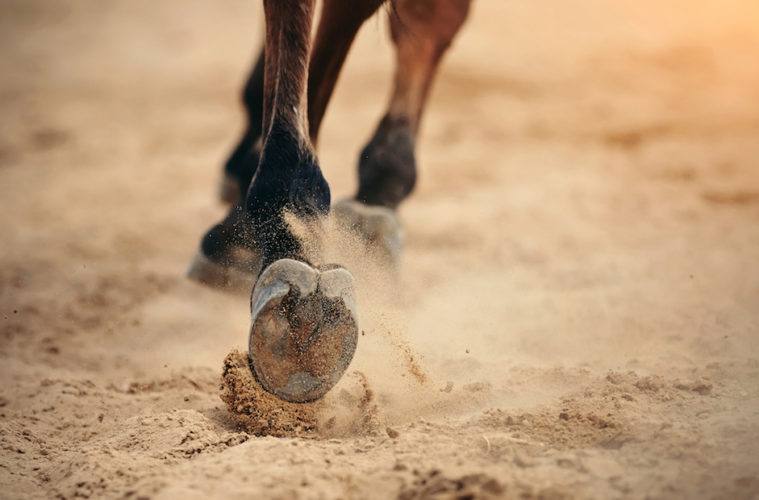The Swedish show jumping horses have been the talk of the town lately, and it’s not just because they won the team gold medal and jumped more clear rounds than any other nation at the 2020 Tokyo Olympic Games. If you heard anything repeated over the livestream, it was probably that two of the three Swedish equine competitors took on the Olympic show jumping course barefoot. Imagine if an Olympic track athlete took to the 100-meter hurdles without shoes and won!
We put shoes on our horses for several reasons. Horseshoes provide protection when wear exceeds growth, traction on certain surfaces, and they can help abate structural issues within the foot and certain lameness issues.Though horseshoes can and often do provide benefits, it may be more beneficial for a horse’s hoof health and overall well-being to go without shoes. It does, however, take time for the hoof to strengthen and adjust to going barefoot.
Why Go Barefoot? Palm Beach Equine Clinic veterinarian and farrier Dr. Stephen O’Grady approaches equine podiatry on an individual horse basis, and he has been supportive of taking shoes off sport horses for many years. “It’s not something that’s new to me,” says Dr. O’Grady. “I advocate taking shoes off when it’s possible, especially when trying to rehabilitate a compromised or distorted hoof capsule. With the footing you have today in most jumper rings, Wellington competition venues included, the horses can often go barefoot. The horse’s foot, when the structures are in good condition, without a shoe is the best at accepting weight, absorbing concussion, dissipating the energy of impact, and allowing the horse to perform without any possible encumbrances on its feet.”

One of the biggest benefits to a barefoot horse, Dr. O’Grady explains, is allowing the whole hoof surface to interact with the ground and receive the stimulation that will continually strengthen the overall foot. When you have the horse’s hoof shod, the weight of the horse is placed around the periphery of the hoof, where the shoe sits, putting all the horse’s weight on the hoof wall and not utilizing the soft tissue structures within the hoof capsule. A healthy bare foot is much better at accepting weight than a foot with a shoe because it loads the weight across the entire foot.
Read more on Horse Network.

